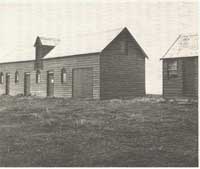Listings for: Waitaki District > Oamaru > Activities and Attractions
Matanaka
Otago''s First Farm
The first European settlers along the Otago coast were whalers who worked at shore whaling stations set up in various bays and inlets in the 1830s. In 1838 Johnny Jones, a Sydney-based trader, whaler and shipowner, bought a whaling station near today’s Waikouaiti. When whaling slumped, he bought large tracts of land from the Maori and in 1840 recruited migrant families to settle at the north end of the bay. Soon afterwards Jones established a farm at Matanaka, on the headland above the settlers’ buildings, where he himself settled in 1843. A number of buildings from this farm — a stable, a granary, a schoolhouse, a privy and a farm shed — still stand today. Probably the oldest surviving farm buildings in New Zealand, they are a legacy from the days of the transition from shore whaling to farming. The buildings are picturesque and superbly situated. On a visit it is possible to recapture the atmosphere of the times when they were new and part of the first farm in Otago, then a remote and sparsely inhabited corner of the young colony of New Zealand.
How To Reach Matanaka
The Matanaka farm buildings are 5km southeast of Waikouaiti, towards the coast. The turnoff from SH 1, clearly sign-posted, is just over 1km north of the Waikouaiti Post Office. Travel along Edinburgh Street and a private road for 4.3km to reach a sign-posted carpark. A walking track leads 400m across fields to the farm buildings. If cattle are in the paddocks, visitors may prefer to take a winding track from the north-western side of the carpark alongside a plantation and through a stand of gum trees. The homestead is a private home and visitors should keep to the direct routes from the carpark to the buildings. Permission to walk north along the old fenceline towards Tumai should be obtained from the farmer.
 |
| This Site © A To Z Publications Ltd, New Zealand, 1997 - 2026. Enquiries to info@atoz-nz.com |
